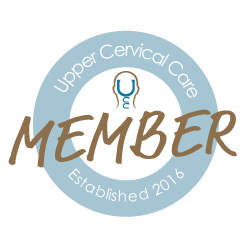Headaches can disrupt your day and leave you searching for answers. Two of the most common types of headaches—migraines and tension headaches—are often confused due to overlapping symptoms. However, understanding their differences is crucial for effective treatment and relief.
What Are Migraines?
Migraines are a neurological condition characterized by recurrent, often debilitating headaches. They typically affect one side of the head but can vary in intensity and location. Migraines involve complex processes in the brain and nervous system, often accompanied by additional symptoms beyond head pain.
Symptoms of Migraines:
- Intense, throbbing or pulsating pain, usually on one side of the head.
- Nausea or vomiting.
- Sensitivity to light, sound, or smells.
- Aura (visual or sensory disturbances before the headache begins).
- Fatigue or difficulty concentrating after an attack (postdrome phase).
Common Triggers for Migraines:
- Stress and emotional tension.
- Hormonal changes, particularly in women.
- Certain foods, like chocolate, aged cheeses, or alcohol.
- Sleep disturbances or irregular schedules.
- Sensory overload, such as bright lights or strong smells.
Migraines are often chronic, with episodes lasting anywhere from a few hours to several days.
What Are Tension Headaches?
Tension headaches, on the other hand, are the most common type of headache and are generally less severe than migraines. They are caused by muscle tension, stress, or poor posture and often feel like a tight band around the head.
Symptoms of Tension Headaches:
- Dull, aching pain on both sides of the head.
- Pressure or tightness around the forehead, temples, or back of the head.
- Tenderness in the scalp, neck, or shoulder muscles.
- No nausea or aura, which differentiates them from migraines.
Common Triggers for Tension Headaches:
- Stress and anxiety.
- Muscle tension in the neck or shoulders.
- Poor posture, especially during prolonged screen time.
- Dehydration or skipped meals.
- Lack of sleep or excessive fatigue.
Tension headaches are typically episodic but can become chronic if left unaddressed.
Migraine vs. Tension Headache: Key Differences
While migraines and tension headaches share some similarities, understanding their differences can help guide effective treatment.
| Feature | Migraine | Tension Headache |
|---|---|---|
| Pain Location | Usually one side of the head | Both sides of the head |
| Pain Quality | Throbbing, pulsating | Dull, aching, or squeezing |
| Associated Symptoms | Nausea, vomiting, sensitivity to light/sound, aura | Muscle tenderness, mild sensitivity to light |
| Duration | 4–72 hours | 30 minutes to several hours |
| Triggers | Hormones, sensory overload, certain foods | Stress, poor posture, dehydration |
Diagnosing the Cause of Your Headaches
Proper diagnosis is essential to treat your headaches effectively. Your healthcare provider may:
- Take a detailed medical history to understand patterns and triggers.
- Conduct a physical examination to check for muscle tension or spinal misalignments.
- Recommend imaging studies (like an MRI or CT scan) if underlying issues are suspected.
Managing Migraines and Tension Headaches
Effective headache management requires a combination of preventive measures, immediate relief strategies, and ongoing care.
1. Lifestyle Adjustments
Both migraines and tension headaches can benefit from simple lifestyle changes:
- Stay Hydrated: Dehydration is a common trigger for both types of headaches.
- Maintain a Regular Sleep Schedule: Irregular sleep can exacerbate migraines and tension headaches.
- Eat Balanced Meals: Avoid skipping meals and limit trigger foods.
- Practice Stress Management: Techniques like meditation, deep breathing, or yoga can reduce headache frequency.
2. Chiropractic Care for Headache Relief
Chiropractic care is an excellent option for addressing both migraines and tension headaches.
Benefits of Chiropractic Care:
- Spinal Alignment: Misalignments in the cervical spine can contribute to muscle tension and migraines. Gentle adjustments restore proper alignment and improve nerve function.
- Muscle Tension Relief: Chiropractic techniques, such as soft tissue therapy, alleviate tension in the neck and shoulders, reducing headache triggers.
- Holistic Guidance: We offer personalized advice on posture, ergonomics, and lifestyle to help you prevent headaches in the future.
3. Relaxation Techniques
Stress is a common trigger for both migraines and tension headaches. Incorporating relaxation techniques can be transformative:
- Progressive muscle relaxation.
- Guided meditation or mindfulness apps.
- Gentle stretching exercises, such as yoga.
4. Over-the-Counter and Prescription Medications
For immediate relief, medications may be necessary. However, they should be used sparingly to avoid rebound headaches.
- For Migraines: Triptans, NSAIDs, or anti-nausea medications.
- For Tension Headaches: Over-the-counter pain relievers like ibuprofen or acetaminophen.
Discuss medication use with your healthcare provider, especially if headaches are frequent.
Preventing Chronic Headaches
Preventive care is key to managing both migraines and tension headaches.
1. Chiropractic Maintenance
Regular chiropractic care helps maintain spinal health, reduce muscle tension, and prevent headache recurrence.
2. Identify Patterns
Keep a headache journal to track triggers, symptoms, and effective relief methods.
3. Optimize Your Environment
- Adjust your workspace for better ergonomics.
- Use blue light glasses to reduce eye strain.
- Create a stress-free zone at home for relaxation.
Take Control of Your Headaches Today
If you’re struggling with migraines or tension headaches, you don’t have to endure the pain alone. Visit www.anatomychiropractic.com to learn more about our services and schedule a consultation.
Discover how chiropractic care can help you differentiate between migraine vs. tension headache and find relief that lasts.


